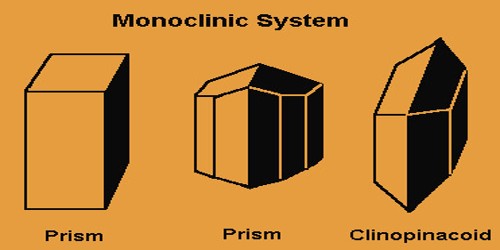In crystallography one of the structural groups to which crystalline solids can be classified is the monoclinic crystal system. Three vectors define a crystal-system. Three axes of unequal lengths say crystals in this system, a, b, and c of which an is perpendicular to b and c but b and c are not perpendicular to one another.
There are six crystal systems; in one of these six systems, all minerals form crystals; In the monoclinic system, as in the orthorhombic system, the crystal is described by vectors of unequal length. Each system is defined by a combination of three factors:
- How many axes it has.
- The lengths of the axes.
- The angles at which the axes meet.
They form a rectangular prism, whose base is a parallelogram. Two pairs of vectors are therefore perpendicular (meet at right angles), while the third pair makes an angle other than 90 degrees. An axis is an intersectional direction. The shortest of all is A. The lengthiest is C. There is also an axis of B, and sometimes an axis of D.

If the atoms or atom groups within the solid are represented by points and therefore the points are connected, the resulting lattice will contain an orderly stacking of blocks or unit cells. Within the monoclinic system, there’s a rarely used second choice of crystal axes that ends up in a unit with the form of an oblique rhombic prism; it is constructed because the oblong two-dimensional base layer can even be described with rhombic axes. During this axis setting, the primitive and base-centered lattices swap in centering type.
Azurite, brazilianite, crocoite, datolite, diopside, jadeite, lazulite, malachite, orthoclase feldspar (including albite moonstone), staurolite, sphene, and spodumene (including hiddenite and kunzite) are minerals that form in the monoclinic system. A single axis, called an axis of twofold symmetry, defines the monoclinic unit cell, in which the cell can be rotated by 180 ° without altering its appearance. Sphenoidal is also a hemimorphic monoclinic; Domatic is also a hemihedral monoclinic; Prismatic is also a regular monoclinic.
Information Sources:
















